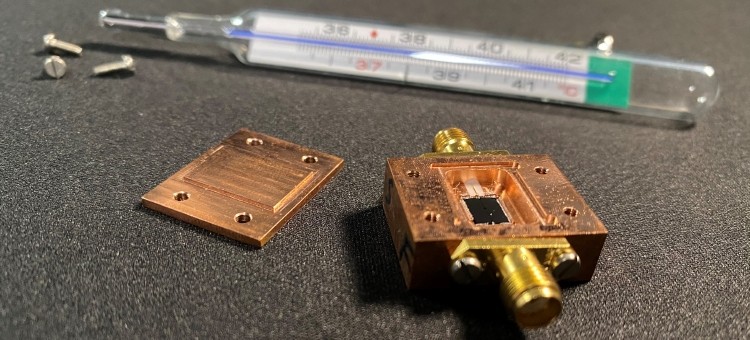New Thermometer Could Spark Quantum Thermodynamics Revolution

A breakthrough thermometer has the potential to help researchers maintain super cold temperatures necessary to drive down quantum computing error rates.
As a side benefit, the novel thermometer might have just sparked a revolution in the quantum thermodynamic field, giving researchers the ability to test whether the fundamental laws of thermodynamics change at nanoscale, ushering in an entirely new era of quantum thermodynamics.
A team at Chalmers University in Sweden has developed a new quantum thermometer which can take fast temperature measurements at the point where the microwave pulses meet the qubit, with precision. Up until now, temperatures could only be taken indirectly, with a delay, the team’s report explained.
“Our thermometer is a superconducting circuit, directly connected to the end of the waveguide being measured. It is relatively simple – and probably the world’s fastest and most sensitive thermometer for this particular purpose at the millikelvin scale,” Simone Gasparinetti, Assistant Professor at the Quantum Technology Laboratory, Chalmers University of Technology said.
Measuring Supercool Quantum Temperatures
In quantum computers microwave pulses are cooled to extremely low supercool temperatures on its path to the quantum processor. The deep freeze results in a more stable qubit and keeps them from carrying additional noise in the form of electronic motion which can interfere with the pulses sending information.
“In other words, they have to measure the temperature of the electromagnetic fields at the cold end of the microwave waveguides, the point where the controlling pulses are delivered to the computer’s qubits. Working at the lowest possible temperature minimizes the risk of introducing errors in the qubits,” the Chalmers announcement of the find explained.
The quantum thermometer will be put to immediate use by the Wallenberg Centre for Quantum Computer, which is working on building a quantum computer with at least 100 qubits that can perform accurate calculations by 2030. To get there, the processors would ideally run at 10 millikelvin, which means researchers need to take consistent temperature readings to monitor how well their systems are running.
“A certain temperature corresponds to a given number of thermal photons, and that number decreases exponentially with temperature,” Per Delsing, Professor at the Department of Microtechnology and Nanoscience, Chalmers University of Technology, and leader of WACQT said. “If we succeed in lowering the temperature at the end where the waveguide meets the qubit to 10 millikelvin, the risk of errors in our qubits is reduced drastically.”
Quantum Thermodynamics
Besides significantly improving the prospects of developing a functioning quantum computer quickly, the new thermometer from Chalmers could be applied to the development of engines, batteries and more to see if the understood properties of thermodynamics can be bent when things shrink down to nanoscale. Marco Scigliuzzo, doctoral student at the Department of Microtechnology and Nanoscience, Chalmers University of Technology is hopeful.
“Standard thermometers were fundamental for developing classical thermodynamics,” he said. “We hope that maybe, in the future, our thermometer will be regarded as pivotal for developing quantum thermodynamics,”



















